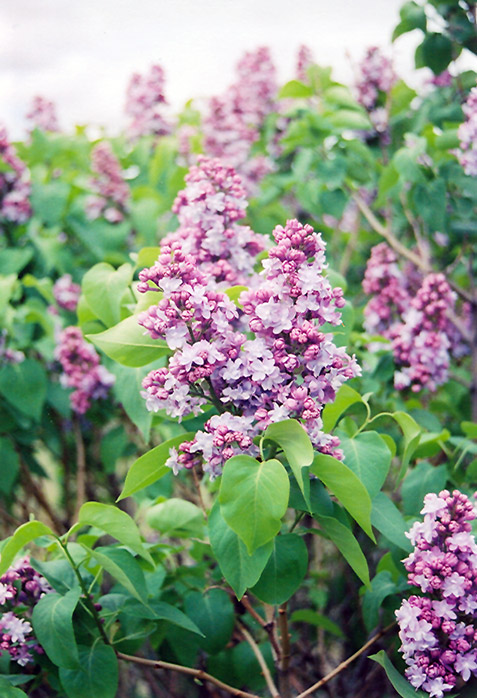Emile Lemoine Lilac
Syringa vulgaris 'Emile Lemoine'
Height: 10 feet
Spread: 10 feet
Sunlight:
![]()
Hardiness Zone: 2
Other Names: Common Lilac
Group/Class: French Hybrid Lilac
Description:
This old French lilac features fragrant double bluish-lavender flowers from pink buds on an upright, multi-stemmed shrub, very hardy, tends to sucker, ideal for screening; full sun and well-drained soil, allow room for air movement
Ornamental Features
Emile Lemoine Lilac features showy panicles of fragrant double powder blue flowers rising above the foliage in mid spring, which emerge from distinctive pink flower buds. The flowers are excellent for cutting. It has bluish-green deciduous foliage. The heart-shaped leaves do not develop any appreciable fall colour.
Landscape Attributes
Emile Lemoine Lilac is a multi-stemmed deciduous shrub with an upright spreading habit of growth. Its relatively coarse texture can be used to stand it apart from other landscape plants with finer foliage.
This is a high maintenance shrub that will require regular care and upkeep, and should only be pruned after flowering to avoid removing any of the current season's flowers. It is a good choice for attracting butterflies to your yard, but is not particularly attractive to deer who tend to leave it alone in favor of tastier treats. Gardeners should be aware of the following characteristic(s) that may warrant special consideration;
- Suckering
- Invasive
- Insects
Emile Lemoine Lilac is recommended for the following landscape applications;
- Mass Planting
- Hedges/Screening
- General Garden Use
Planting & Growing
Emile Lemoine Lilac will grow to be about 10 feet tall at maturity, with a spread of 10 feet. It tends to be a little leggy, with a typical clearance of 3 feet from the ground, and is suitable for planting under power lines. It grows at a medium rate, and under ideal conditions can be expected to live for approximately 30 years.
This shrub should only be grown in full sunlight. It is very adaptable to both dry and moist locations, and should do just fine under average home landscape conditions. It is not particular as to soil type or pH. It is highly tolerant of urban pollution and will even thrive in inner city environments. This is a selected variety of a species not originally from North America.

